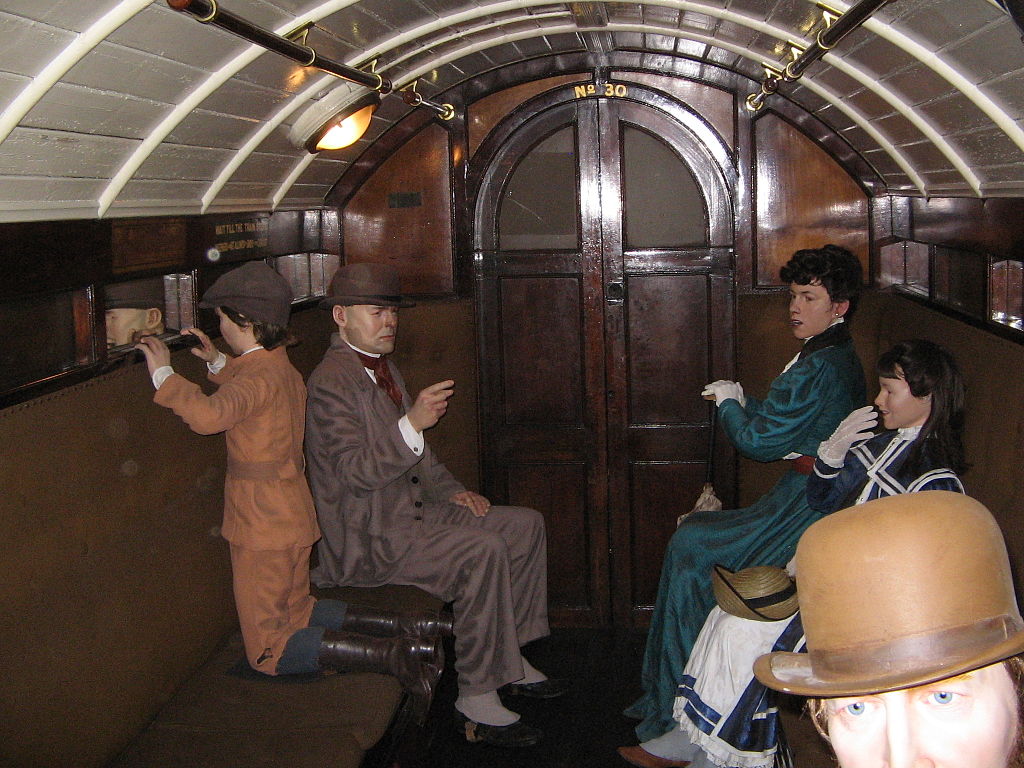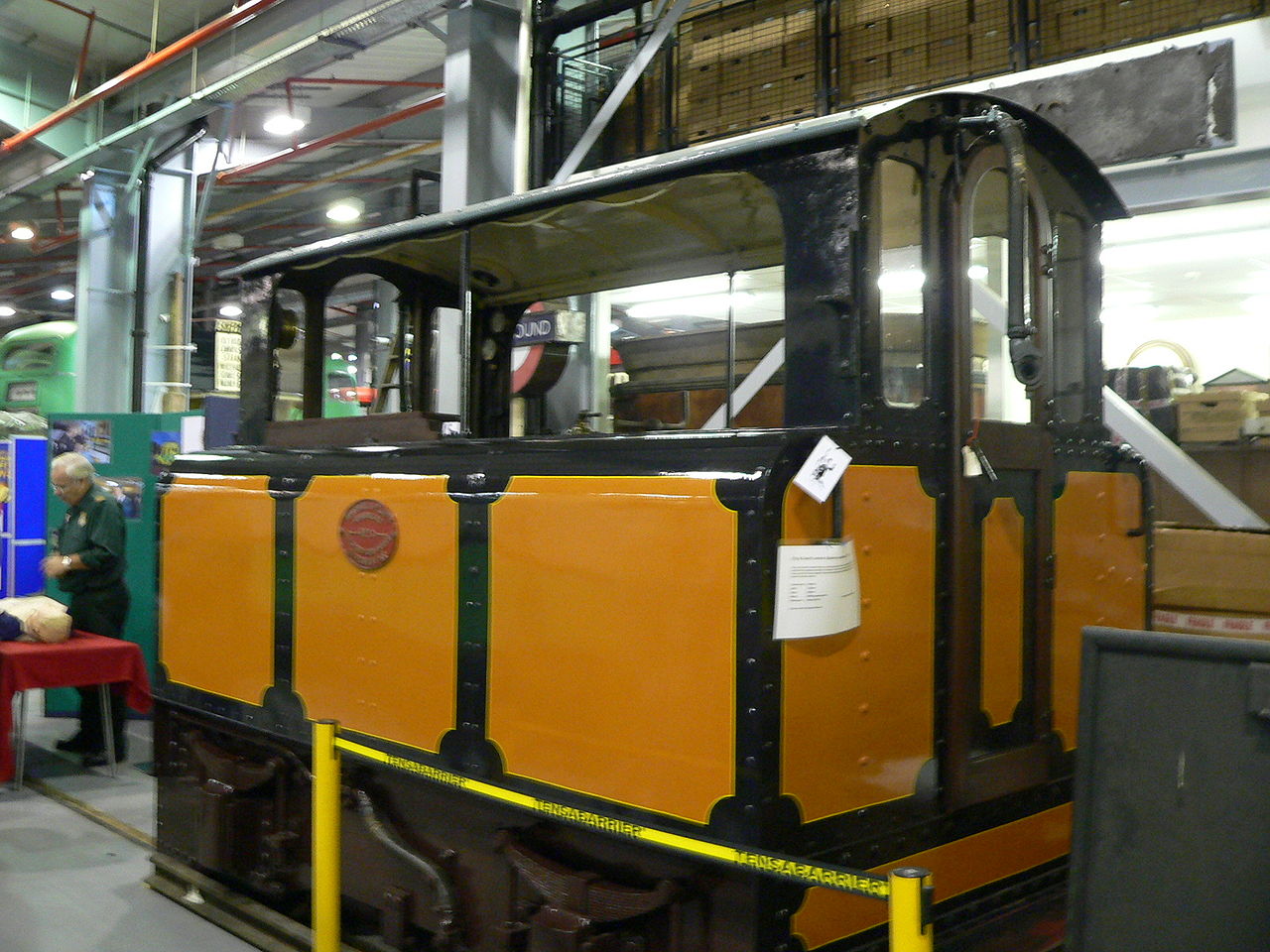The City and South London Railway, the world’s first deep-level underground railway, opened 129 years ago today, on November 4th, 1890.
It was the first part of London’s new “tube railway” system and the first major railway to use electric-powered trains. Running between the City of London and Stockwell, the 3.2-mile railway had six stations and ran underneath the River Thames in a pair of tunnels.
 The official opening of the revolutionary railway was carried out by Edward, Prince of Wales, later crowned Edward VII, but the line wasn’t open to the public until more than a month later, on December 18th. In the meantime, there was extensive testing to make sure the equipment was reliable and to allay fears that the tunnels, especially under the river, might collapse.
The official opening of the revolutionary railway was carried out by Edward, Prince of Wales, later crowned Edward VII, but the line wasn’t open to the public until more than a month later, on December 18th. In the meantime, there was extensive testing to make sure the equipment was reliable and to allay fears that the tunnels, especially under the river, might collapse.
Work on the underground railway began in 1886, with large segments of cast iron tubing continually manoeuvred into place and bolted together as the tunnelling progressed. It was this system which gave the railway its nickname of “The Tube”, which still persists today.
The original underground trains comprised an engine pulling three carriages, each accommodating up to 32 passengers on bench seating. The carriages had sliding doors at the end so that passengers could enter and exit easily from the station platforms.
The only windows were in a narrow band high on the carriage sides – it was reasoned there was no need for windows as there was nothing to look at. This gave the carriage interiors (pictured above) a claustrophobic feel and quickly led to them being dubbed “padded cells”. Unlike other railways above ground, there was only one class of ticket, with a flat fare of tuppence collected at station turnstiles.
The original plan was to use trains hauled by steel cables, similar to those used in mines. It was a proven technology, but when the cable contractor went bankrupt during construction of the railway it was decided instead to use new and more experimental electric-powered locomotives. They drew their power from a third rail running between the tracks, which was electrified by power from a generating station built at Stockwell. One of the original locos is preserved in the London Transport Museum (pictured below).
 The City and South London Railway’s original stations were at Stockwell, The Oval, Kennington, the Elephant and Castle, Borough and King William Street in The City. Despite its cramped carriages and competition from bus and tram services – which propagated rumours that “the Tube” was inherently dangerous – the new railway attracted 5.1 million passengers in 1891, its first full year of operation. Overcrowding on the Underground was a problem right from the start!
The City and South London Railway’s original stations were at Stockwell, The Oval, Kennington, the Elephant and Castle, Borough and King William Street in The City. Despite its cramped carriages and competition from bus and tram services – which propagated rumours that “the Tube” was inherently dangerous – the new railway attracted 5.1 million passengers in 1891, its first full year of operation. Overcrowding on the Underground was a problem right from the start!
In the years that followed new tunnels were dug, allowing the Underground to be extended to other parts of London and linked up with the city’s major railway stations above ground. Initially the tunnels were dug and their railways operated by lots of different private companies, but as their number grew it became obvious that they needed to be linked up in a single integrated network and operated by one company.
Moves towards this began in the mid-1920 and eventually in 1933 the London Passenger Transport Board was formed as a public corporation to take charge of all the underground railways, together with bus and tram services within a designated area. It was the forerunner of today’s Transport for London, which still runs the London Underground.
Today parts of the original City and South London Railway still form part of the Bank Branch of the Northern Line from Camden Town to Kennington and the southern leg of the line from Kennignton to Morden. Other parts of the original railway became disused as the network expanded, but during the Second World War disused tunnels between the stations at Borough and King William Street were converted for use as a large public air raid shelter.
Other cities around the world also took inspiration from London’s new underground railway, many sending delegations to visit and learn about the system. Soon work was under way on similar projects in major cities throughout Europe and North America, but the City and South London remains the grandfather of them all.
